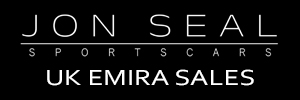Depending on the architecture of the system... older designs may not have had an all-digital signal path. It was likely much easier to integrate a Bluetooth audio module and take the analog output from that to be fed into the audio amplification section. In those cases, poorly chosen coupling capacitor values would have attenuated the high and low frequencies, in addition to any output signal level issues that may exist. It isn't really until more modern multi-input SoC became commonplace that all digital audio systems became more popular in mass production consumer electronics designs.
For the Lotus Emira, Geely's system incorporates a Snapdragon 820 SOC and the data path from the Bluetooth module is PCM over an I2S bus. The 820 sends audio over a TDM bus to a NXP Audio/Radio-Tuner chip, and the NXP chip sends the audio over TDM to a A2B audio transceiver, which then sends it to the amp. Up to this point this is an all-digital audio path. It's not clear to me where the DSP magic happens, whether it's in the NXP chip or the audio amplifier.
Based on some additional research, Yamaha seemed to be providing an 8-Channel A2B based amplifier and speaker system solution to Geely with built-in DSP capabilities. I'm not sure if this is the one used in the Emira. The system shown includes 12 drivers: one sub, four woofers, three midranges, and four tweeters. It's likely that the four tweeters are on a passive crossover and shares an output channel with the four woofers. The midranges may have been added to fill in the midrange for the tweeter-woofer crossover region, where location-dependent cancellations are the most likely to occur and are impossible to correct even with DSP due to changing phase angle of the drivers. This may be the same crossover topology used by the KEF drivers in the Emira, though no need for corrective midranges since the Uni-Q driver is inherently time-aligned. But if the Uni-Q drivers are using passive crossovers, then the three plus two woofers plus two subwoofer drivers is only 7 channels...
What's odd is that the amp provided by Yamaha is spec'd at 385 watts, but that's when paired with Yamaha's speakers. It's possible that the KEF drivers' impedance necessitate a different amplifier, which is where the Harman "booster" amp comes in.
I don't know, I guess we'll find out more once someone gets a list of the parts in an Emira and we can dig for more info with part numbers.
EDIT: I just found out that the system in the Lynk & Co 01 is made by Infinity(Harman), not Yamaha. So never mind about all of the Yamaha stuff above.






